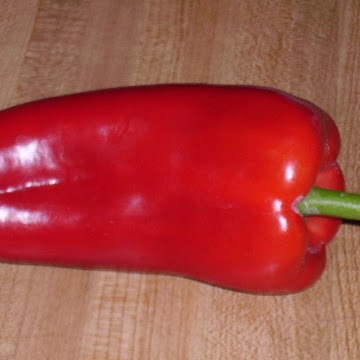Terry Don Mathis
age ~82
from Milton, GA
- Also known as:
-
- Don T Mathis
- Terry D Mathis
- Terry Dr Mathis
- Don D Mathis
- Terrydon Mathis
- Jamey G Mathis
- Don Martens
Terry Mathis Phones & Addresses
- Milton, GA
- Matthews, NC
- 3562 Finger Crk, Lilburn, GA 30047 • 7707171064
- Christiana, TN
Work
-
Company:E.i. a pharmaceutical solution worksAug 2012
-
Position:Material handler/operator/forklift driver
Education
-
School / High School:Concord High School- Concord, NC1996
-
Specialities:GED in basic
Lawyers & Attorneys
Us Patents
-
Sub-Miniature Optical Fiber Cables, And Apparatuses And Methods For Making The Sub-Miniature Optical Fiber Cables
view source -
US Patent:6415085, Jul 2, 2002
-
Filed:Aug 1, 1995
-
Appl. No.:08/510021
-
Inventors:Loinell Graham - Snellville GA
James Robert Holman - late of Lilburn GA
Terry Don Mathis - Lilburn GA
Montri Viriyayuthakorn - late of Norcross GA
Carla G. Wilson - Conyers GA
Parry A. Moss - Stone Mountain GA -
Assignee:ATT Corp. - New York NY
-
International Classification:G02B 644
-
US Classification:385102, 385107
-
Abstract:A simplex optical fiber cable includes an optical fiber, a buffer surrounding and in contact with the optical fiber, a layer of strength fibers disposed about the buffer, and a sheath member surrounding and in contact with the yarn layer. In cross section the cable has a diameter of less than 2. 0 millimeters (mm) and thus is much smaller in diameter than optical fiber cables presently available. Preferably, if the buffer is relatively thin a slick substance is applied to the outer surface of the buffer to allow the buffer and the strength fiber layer to slide relation to each other. If the buffer is relatively thick, a friction-reducing substance can be applied to the optical fiber to facilitate stripping of the buffer from the fiber a duplex optical fiber cable includes two simplex optical fiber cables having their respective sheaths joined to produce a figure-eight configuration. A second duplex optical fiber cable includes two simplex optical fiber cables arranged side-by-side and an oversheath surrounds both cables.
-
Sub-Miniature Optical Fiber Cables, And Apparatuses And Methods For Making The Sub-Miniature Optical Fiber Cables
view source -
US Patent:20020025127, Feb 28, 2002
-
Filed:Aug 28, 2001
-
Appl. No.:09/941257
-
Inventors:Loinell Graham - Snellville GA, US
James Holman - Lilburn GA, US
Terry Mathis - Lilburn GA, US
Montri Viriyayuthakorn - Norcross GA, US
Carla Wilson - Conyers GA, US
Parry Moss - Stone Mountain GA, US -
International Classification:G02B006/44
-
US Classification:385/102000, 385/107000
-
Abstract:A simplex optical fiber cable of this invention includes an optical fiber, a buffer preferably of nylon, surrounding and in contact with the optical fiber, a yarn layer with strength fibers, preferably aramid fibers, disposed about the buffer and a sheath preferably formed of polyvinyl chloride (PVC) surrounding and in contact with the yarn layer. [In cross-section, the simplex optical fiber cable has a diameter less than 2.0 millimeters (mm), and thus is much smaller in diameter than optical fiber cables presently available Preferably, if the buffer is relatively thin providing limited protection to the optical fiber, a slick substance such as talc is applied to an outer surface of the buffer before the yarn layer is disposed thereon. The slick substance allows the buffer of the optical fiber to slide to a degree in contact with the yarn layer and thus reduces fatigue caused by axial movement of a ferrule of the connector terminating the optical fiber cable. On the other hand, if the buffer is relatively thick, a friction-reducing substance such as Modaflo™ can be applied to the optical fiber to allow the buffer to be stripped relatively easily]. A zip-cord duplex optical fiber cable of this invention includes essentially two simplex optical fiber cables with their respective sheaths joining at a middle portion along the axial length of the simplex optical fiber cables. [Thus, in cross-section, the zip-cord duplex optical fiber cable has a figure-eight shape with a relatively thin portion in the middle which can be manually pulled apart to separate the zip-cord duplex optical fiber cable into separate simplex optical fiber cables. This feature of the invention allows the zip-cord duplex optical fiber cable to be split at its ends to allow connectors attached to respective ends of the optical fiber cables for connection to respective spaced connector receptacles]. A second duplex optical fiber cable of this invention includes two simplex optical fiber cables arranged side-by-side with an oversheath extruded about and holding together the two simplex optical fiber cables. In cross-section, the two duplex optical fiber cables of this invention are less than 2.0 mm in height and 4.0 mm in width, and thus are much smaller than currently available duplex optical fiber cables. [The invention also includes die assemblies and methods for making the simplex and duplex optical fiber cables].
-
Optical Fiber Drop Cable
view source -
US Patent:20040022505, Feb 5, 2004
-
Filed:Jul 30, 2002
-
Appl. No.:10/208659
-
Inventors:Bernard Eichenbaum - Basking Ridge NJ, US
Terry Mathis - Lilburn GA, US -
International Classification:G02B006/44
-
US Classification:385/114000
-
Abstract:An optical fiber drop cable for carrying one or more optical fibers from a curb to a customer premises. The optical fiber drop cable comprises first and second ribbon-like longitudinal support members disposed one atop the other and having one or more optical fibers disposed between them in a longitudinal direction of the first and second ribbon-like longitudinal support members. The first and second ribbon-like longitudinal support members each have first and second edges and inner and outer surfaces. The first edge of the first ribbon-like longitudinal support member is secured to the first edge of the second ribbon-like longitudinal support member and the second edge of the first ribbon-like longitudinal support member is secured to the second edge of the second ribbon-like longitudinal support member. Securing the edges of the first and second ribbon-like members together in this manner obviates the need to extrude an outer jacket for the cable, which decreases manufacturing costs, thereby decreasing the overall cost of the optical fiber drop cable.
-
Optical Fiber Cable Products Having A Stress Indicating Capability And Process For Making Same
view source -
US Patent:61084751, Aug 22, 2000
-
Filed:Dec 22, 1997
-
Appl. No.:8/995577
-
Inventors:John T. Chapin - Alpharetta GA
Terry D. Mathis - Lilburn GA
Montri Viriyayuthakorn - Norcross GA -
Assignee:Lucent Technologies Inc. - Murray Hill NJ
-
International Classification:G02B 644
-
US Classification:385128
-
Abstract:A fiber optic cable having stress indicating means and a method for making same. The stress indicating means provides a cost effective method for determining whether an optical cable has been bent, stressed or otherwise mishandled, which may cause optical loss when the cable is placed in service. Broadly stated, the fiber optic cable according to the instant invention includes an optical fiber, comprised of a core and a cladding and a stress indicator concentrically disposed about the fiber that changes color when subjected to stress. A technician can thereby visually identify cables that have been bent or mishandled and subject them to testing before installation.
-
Optical Fiber Connector Comprising Drawn Glass Tubes
view source -
US Patent:48506702, Jul 25, 1989
-
Filed:Aug 29, 1983
-
Appl. No.:6/527341
-
Inventors:Terry D. Mathis - Lilburn GA
Calvin M. Miller - Lilburn GA -
Assignee:American Telephone and Telegraph Company, AT&T Bell Laboratories - Murray Hill NJ
-
International Classification:G02B 638
-
US Classification:350 9621
-
Abstract:The optical fiber connector comprises two right circular drawn glass capillary cylinders, means for maintaining the cylinders in substantially fixed relative radial relation, and means for maintaining the cylinders in substantially fixed relative axial relation. The invention has a multiplicity of embodiments, including connectors functioning as variable attenuators, as fiber-to-fiber switches and connectors comprising an in-line filtering element. Connectors according to the invention can have very low insertion loss, are easily field-installed, can be easily and inexpensively manufactured, and are useful for single mode as well as for multimode fiber applications.
-
Optical Fiber Service Cable
view source -
US Patent:50509578, Sep 24, 1991
-
Filed:Apr 27, 1990
-
Appl. No.:7/515981
-
Inventors:Alfred S. Hamilton - Norcross GA
James R. Holman - Lilburn GA
Michael D. Kinard - Lawrenceville GA
Terry D. Mathis - Lilburn GA -
Assignee:AT&T Bell Laboratories - Murray Hill NJ
-
International Classification:G02B 644
-
US Classification:385113
-
Abstract:An optical fiber cable (20) which is suitable for service from a distribution closure to a customer's premises includes a transmission media core (21) enclosed in a relatively rigid tubular member (40). The relatively rigid tubular member is enclosed in a jacket (44) comprising a plastic material which has a cut-through resistance which is substantially less than that of the tubular member. Interposed between the tubular member and an outer surface of the jacket is a strength member system comprising two yarn-like longitudinally extending strength member groups (52--52). The strength member grops are diametrically opposed to each other and are disposed in engagement with the tubular member.
-
Dry Core Optical Fiber Cables For Premises Applications And Methods Of Manufacture
view source -
US Patent:62052772, Mar 20, 2001
-
Filed:Feb 19, 1999
-
Appl. No.:9/253412
-
Inventors:Terry D. Mathis - Lilburn GA
Wayne M. Newton - Lilburn GA
Jim J. Sheu - Dunwoody GA
Montri Viriyayuthakorn - Norcross GA
Carla G. Wilson - Conyers GA
Mark I. Shmukler - Alpharetta GA -
Assignee:Lucent Technologies Inc. - Murray Hill NJ
-
International Classification:G02B 644
-
US Classification:385106
-
Abstract:A preferred embodiment of the dry core optical fiber cable of the present invention incorporates a plurality of sub-units with each of said sub-units being arranged adjacent another of the sub-units so that the plurality of sub-units define an outer periphery. Preferably, each of the sub-units includes a plurality of optical fibers, a yarn layer and a sub-unit jacket, with each of the optical fibers being arranged adjacent another of the optical fibers. The sub-unit jacket surrounds the optical fibers, with the yarn layer being disposed between the optical fibers and the sub-unit jacket. An outer jacket surrounds the plurality of sub-units, with water-blocking tape being disposed between the outer jacket and the outer periphery of the sub-units. A method of manufacture of the cable also is provided.
-
Optical Fiber Connector
view source -
US Patent:49347853, Jun 19, 1990
-
Filed:Feb 23, 1989
-
Appl. No.:7/314683
-
Inventors:Terry D. Mathis - Lilburn GA
Calvin M. Miller - Roswell GA -
Assignee:American Telephone and Telegraph Company - New York NY
-
International Classification:G02B 638
-
US Classification:350 9621
-
Abstract:Disclosed is an optical fiber connector that comprises two right capillary cylinders or "plugs", an alignment sleeve that contactingly maintains the plugs in substantially fixed relative relation, and means for maintaining the plugs in substantially fixed relative axial relation. Connectors according to the invention can have very low insertion loss, are easily field-installed, can be easily and relatively inexpensively manufactured, and are useful for single mode as well as for multimode fiber applications. In a preferred embodiment the connector takes the form of the ST. RTM. connector.
Name / Title
Company / Classification
Phones & Addresses
Owner, President
Mathis Grading, Inc
Excavation Contractor
Excavation Contractor
2530 Pne Grv Rd, Cumming, GA 30041
7708876195
7708876195
Co-Owner
Gwyn Mathis Grooming
Animal Services · Kennels
Animal Services · Kennels
PO Box 418, Locust, NC 28097
126 Kennel Rd, Stanfield, NC 28163
7048884637
126 Kennel Rd, Stanfield, NC 28163
7048884637
Chief Executive Officer
Dkj Leasing Inc
Equipment Rental/Leasing
Equipment Rental/Leasing
2537 Pne Grv Rd, Cumming, GA 30041
Vice-Chairman
SAWNEE ELECTRIC MEMBERSHIP CORPORATION
Electric Services · Electric Power Distribution
Electric Services · Electric Power Distribution
543 Atlanta Rd, Cumming, GA 30040
PO Box 266, Cumming, GA 30028
543 Atlanta Hwy, Cumming, GA 30040
7708872363, 7708868119, 7708872363
PO Box 266, Cumming, GA 30028
543 Atlanta Hwy, Cumming, GA 30040
7708872363, 7708868119, 7708872363
Resumes

Terry Mathis
view source
Terry Mathis
view source
Terry Mathis
view source
Terry Mathis
view source
Terry Mathis
view source
Terry Mathis
view source
Terry Mathis
view source
Terry Mathis
view sourceLicense Records
Terry R Mathis
License #:
34489 - Active
Category:
Tow Truck Operator (Consent Tow)
Expiration Date:
Apr 23, 2017
Isbn (Books And Publications)

Against John Hick: An Examination of His Philosophy of Religion
view sourceAuthor
Terry Richard Mathis
ISBN #
0819145130

Against John Hick : An Examination of His Philosophy of Religion
view sourceAuthor
Terry R. Mathis
ISBN #
0819145122

Terry Mathis
view source
Terry Mathis
view source
Terry Mathis
view source
Terry Mathis
view source
Terry L Mathis
view source
Terry Tschopp Mathis
view source
Lori Terry Mathis
view source
Terry Mathis
view sourceYoutube
Plaxo

Terry Mathis
view sourceSales Rep at Munn Marketing Group

Terry Mathis
view sourceCitadel Broadcasting

Terry Mathis
view sourceMetrovilla
Classmates

Terry Mathis
view sourceSchools:
Highland Rim Elementary School Fayetteville TN 1966-1973, Fayetteville Central High School Fayetteville TN 1974-1978
Community:
Judith Corder

Terry Mathis
view sourceSchools:
Central-Lincoln County High School Fayetteville TN 1974-1978
Community:
William Kerr

Terry Mathis
view sourceSchools:
Harriman High School Harriman TN 1957-1961
Community:
Charles Gunter, Samuel Raymond

Terry Smith (Mathis)
view sourceSchools:
James Island High School Charleston SC 1998-2002
Community:
Jill Samuels, Debbie Getsinger

Terry Mathis
view sourceSchools:
Eagle Rock High School Los Angeles CA 1961-1965
Community:
Shirley Wisdom, Marilyn Meredith

Terry Mathis
view sourceSchools:
Troy High School Troy TX 1990-1994
Community:
Angela Hernandez, Heather Hubbell, Megan Holland, Ricky Kuban

Terry Mathis (Kessler)
view sourceSchools:
Samuel F. B. Morse Elementary School 98 Baltimore MD 1963-1969, Rock Glen MIddle School Baltimore MD 1970-1973
Community:
Virginia Caston

Terry Mathis
view sourceSchools:
Shamrock High School Decatur GA 1971-1975, Lakewood High School St. Petersburg FL 1974-1975
Community:
Donald Mcknight
Myspace
Flickr
Googleplus

Terry Mathis
Lived:
Concord NC
Work:
E.I.a Pharmacuetical Solution Works - Machine Operator
Education:
Concord High School
Tagline:
I'm just me.

Terry Mathis

Terry Mathis

Terry Mathis

Terry Mathis

Terry Mathis

Terry Mathis

Terry Mathis
Get Report for Terry Don Mathis from Milton, GA, age ~82













